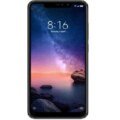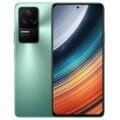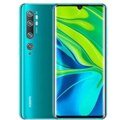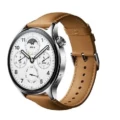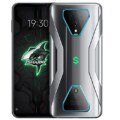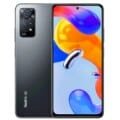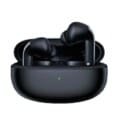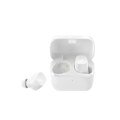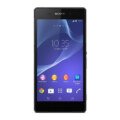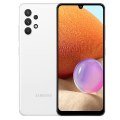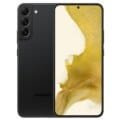Xiaomi Redmi Pad
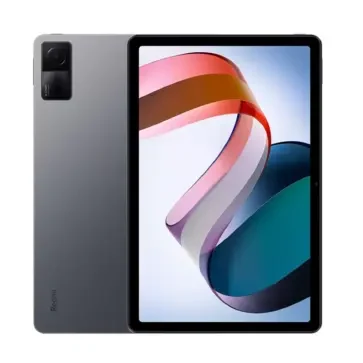
Xiaomi Redmi Pad - Specs
Overview
| Launch | 04 October 2022 |
| Status | Available |
| Network Technology Global wireless standard for telecommunication | No cellular connectivity |
| Price (Initial) | ₹ 22,8K |
Design
| Body Type Design Type called form factor refers to a mobile phone's size, shape, and style as well as the layout and position of major components of phone. There are three major form factors seen in mobile phones => bar phones, folding phones and sliding phones. | BAR |
| Dimensions | 250.5 x 158.1 x 7.1 mm, (9.86 x 6.22 x 0.28 in) |
| Weight | 465 g, (1.03 lb) |
| Colors | Graphite Gray, Moonlight Silver, Mint Green |
Display
| Display Type Display Technology => A number of display technologies and types used in mobile phones => TFT (Thin Film Transistor), IPS (In-Place Switching), OLED (Organic Light Emitting Diode), AMOLED (Active-Matrix Organic Light-Emitting Diode), Super AMOLED (an even advanced version of AMOLED), Resistive Touchscreen (Resistive touchscreens contain two layer of conductive material with a very small gap between them which acts as a resistance), Capacitive Touchsceen (Capacitive touchscreen technology consists of a layer of glass coated with a transparent conductor) | IPS LCD, 1B colors |
| Pixel Density Pixel Density (PPI) is refers to the concentration of pixels on a particular display, measured in pixels per inch (ppi). Pixel density is calculated by dividing the diagonal pixel resolution of a display by its diagonal size, higher pixel density better display quality. | ~220 ppi density |
| Display Size Size of the area where pictures and videos are displayed. | 10.61 inches, IPS LCD, 1B colors |
| Resolution | 1200 x 2000 pixels, 5:3 ratio |
Camera
| Primary Camera Camera is able to capture photographs and usually videos, The most important characteristics of a camera are the resolution (measured in megapixels), lens focus type (fixed or automatic), higher megapixel cameras are known to capture higher quality photos, but not always a good measurement of the photos quality. | 8 MP |
| Selfie Camera | 8 MP |
| Video |
1080p@30fps |
Core Specification
| Operating System OS => Every computer system run on a base software called Operating System (OS). Operating System controls all basic operations of the computer (such as smartphone, PDAs, tablet computers and other handheld devices). The Operating System allows the user to install and run third party applications (apps), apps are used to add new functionality to the device. | Android 12 |
| CPU CPU (Central Processing Unit) mostly known as processors, CPU processes instructions in order to carry out certain functions that make your device operate properly. Processors are often described as the brain of computers, smartphones and tablets, Smartphones and tablets rely on processors to carry out their every task, Processors are an incredibly important factor in selecting any type of computing device, including your smartphone. | Octa-core (2x2.2 GHz Cortex-A76 & 6x2.0 GHz Cortex-A55) |
| Chipset Chipset is a group of integrated circuits designed to perform one or a more dedicated functions, often with real time computing constraints, Popular smartphones are equipped with more advanced embedded chipsets that can do many different tasks depending on their programming. | Mediatek MT8781 Helio G99 (6nm) |
| GPU GPU (Graphics Processing Unit) is a single-chip processor designed to rapidly manipulate and alter memory to accelerate the creation of images in a frame buffer intended for output to a display, This includes things such as lighting effects, object transformations, and 3D motion. | Mali-G57 MC2 |
| RAM (Memory) RAM (Random Access Memory) is a type of computer memory that can be accessed randomly, any byte of memory can be accessed without touching the preceding bytes that allows information to be stored and accessed quickly from random locations. RAM is the most common type of memory found in computer systems, smartphones, tablets and other electronic devices. | 3GB, 4GB, 6GB |
| Internal Storage Internal Storage is a data storage space (flash memory) mostly used in smartphones, tablets and other electronic devices where operating system, apps, music, photos, videos, files and other user data Is stored. | 64GB, 128GB |
Specification
| Sensors Sensors are electronic components that detects and responds to some type of input from the physical environment. The specific input could be light, heat, motion, moisture, pressure and location, The output is generally a signal that is converted to use in computing systems, a location sensor, such as a GPS receiver is able to detect current location of your electronic device. |
Accelerometer |
| Battery Backup | Li-Po 8000 mAh, non-removable |
| User Interface UI or user interface of a device is the look and feel of the on-screen menu system. How it works, its color scheme, how it responds to button presses, all of these things are part of the user interface. | MIUI 14 |
| Wi-fi Wi-Fi is a popular wireless networking technology using radio waves to provide high-speed network connections that allows devices to communicate without cords or cables, Wi-Fi is increasingly becoming the preferred mode of internet connectivity all over the world. | Wi-Fi 802.11 a/b/g/n/ac, dual-band, Wi-Fi Direct |
| Bluetooth Bluetooth is a wireless communications technology for exchanging data between mobile phones, headsets, computers and other network devices over short distances without wires, Bluetooth technology was primarily designed to support simple wireless networking of personal consumer devices. | 5.2, A2DP, LE |
| USB | USB Type-C, OTG |
| Card Slot Memory Card Slot is a special slot for inserting a memory card. Memory cards allow you to expand the phone's built-in memory, A memory card (sometimes called a flash memory card or a storage card) is a small storage medium used to store data such as text, pictures, audio, and video, for use on small, portable or remote computing devices such as mobile phones, mp3 players, digital cameras. | microSDXC |
| Loudspeaker | Yes |
Xiaomi has recently launched the Redmi Pad, which is the latest addition to its tablet lineup. The Redmi Pad comes packed with features that make it a worthy contender in the tablet market.
Design and Display
The Xiaomi Redmi Pad features a 10.1-inch display with a resolution of 1920 x 1200 pixels. The screen has an aspect ratio of 16:10, which makes it ideal for watching movies and playing games. The tablet has a sleek and modern design, with slim bezels that give it a premium look.
Performance
The Xiaomi Redmi Pad is powered by the MediaTek Helio G80 chipset, which is a powerful chipset that can handle most tasks with ease. The tablet comes with 4GB of RAM and 64GB or 128GB of internal storage, depending on the variant you choose. The device runs on MIUI 12, which is based on Android 10.
Battery Life and Connectivity
The Xiaomi Redmi Pad is with a 7,250mAh battery that can last for up to 12 hours on a single charge. The tablet supports 10W charging, which means that it can be relatively quick. The device also supports Wi-Fi and Bluetooth connectivity, which makes it easy to connect to other devices.
Camera
The Xiaomi Redmi Pad has an 8MP rear camera and a 5MP front-facing camera. While the cameras are not the main selling point of the tablet, they are good enough for taking quick photos or video calls.
Multitasking and Productivity
The Redmi Pad comes with a split-screen feature that allows you to run two apps side-by-side. This feature is useful for multitasking and productivity. The tablet also supports a stylus, which makes it easy to take notes or draw sketches.
Gaming
The Xiaomi Redmi Pad is an excellent option for gaming. The tablet’s large screen and powerful chipset make it ideal for playing games like PUBG or Call of Duty Mobile. The device also has dual speakers that provide an immersive gaming experience.
Verdict
The Redmi Pad is an excellent tablet that offers great value for money. The tablet’s combination of powerful hardware, long battery life, and large screen make it a great option for both work and play. The device is available in two colors – Silver and Gold – and is at around $229 for the 64GB variant and $279 for the 128GB variant. Overall, the Xiaomi Redmi Pad is an excellent tablet that offers a great user experience.



